

|
|
Man at the Top
R2 - United Kingdom - Network Review written by and copyright: Paul Lewis (24th April 2013). |
|
The Film
 Man at the Top (Mike Vardy, 1973) 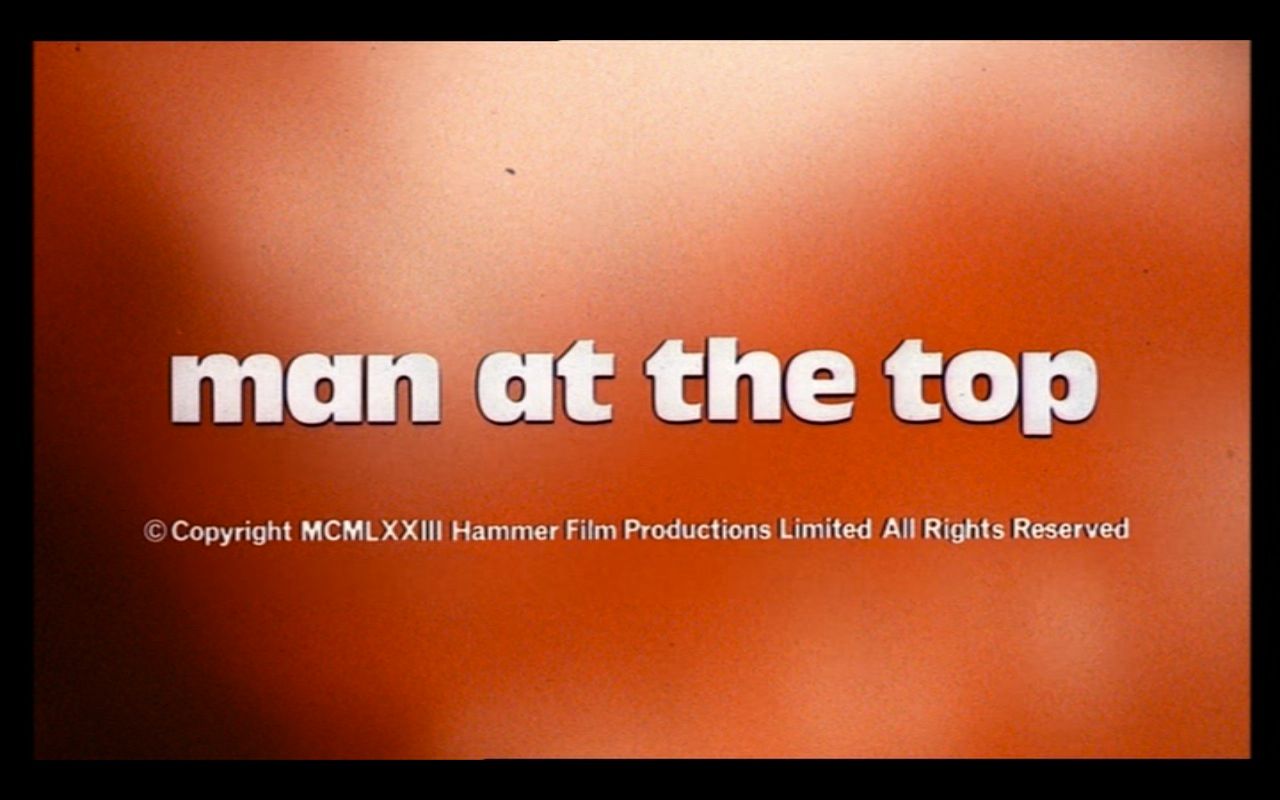 Continuing the saga of Joe Lampton, introduced in John Braine’s ‘Northern realist’ novel Room at the Top (written in 1953 but published in 1957) and continued in its sequel Life at the Top (1962), Mike Vardy’s film Man at the Top (1973) followed immediately in the wake of Thames’ series of the same title (1970-2). (See our reviews of series one and series two here and here.) Like the series, the film features Kenneth Haigh as Braine’s anti-hero Joe Lampton. On the screen, Lampton had first been played by Laurence Harvey in Jack Clayton’s 1958 screen adaptation of Room at the Top, a film which is often claimed to have spearheaded the British New Wave (see Taylor, 2006: 70; Sinyard, 2000: 37); Harvey played the character again, in Life at the Top (Ted Kotcheff, 1965). A mercurial character, Lampton was one of the first wave of the disillusioned post-war ‘angry young men’ associated with the social realist cinema and literature of Britain in the late-1950s and early-1960s. His immediate contemporaries were Jim Dixon (in Kingsley Amis’ 1954 novel Lucky Jim) and Jimmy Porter (in John Osborne’s 1957 play Look Back in Anger). Kenneth Haigh’s performance as Jimmy Porter in the original stage production of Look Back in Anger set the tone for the representation of these characters in cinema (although Richard Burton took the role in Tony Richardson’s 1959 film adaptation of the play): in a 1980 article about a revival of the play, featuring Malcolm McDowell as Jimmy Porter, theatre critic John Simon asserted that Haigh’s Porter carried an ‘unrelieved, lachrymose underlying violence’ and ‘was a relentlessly smoldering volcano’ (Simon, 1980: 48). Haigh’s performance as Lampton throughout the two series of Man at the Top offers a view of the archetypal ‘angry young man’, by an actor who helped to define the term, as he moves through middle age, although here in Vardy’s film Lampton is frequently referred to as a ‘young man’. Continuing the saga of Joe Lampton, introduced in John Braine’s ‘Northern realist’ novel Room at the Top (written in 1953 but published in 1957) and continued in its sequel Life at the Top (1962), Mike Vardy’s film Man at the Top (1973) followed immediately in the wake of Thames’ series of the same title (1970-2). (See our reviews of series one and series two here and here.) Like the series, the film features Kenneth Haigh as Braine’s anti-hero Joe Lampton. On the screen, Lampton had first been played by Laurence Harvey in Jack Clayton’s 1958 screen adaptation of Room at the Top, a film which is often claimed to have spearheaded the British New Wave (see Taylor, 2006: 70; Sinyard, 2000: 37); Harvey played the character again, in Life at the Top (Ted Kotcheff, 1965). A mercurial character, Lampton was one of the first wave of the disillusioned post-war ‘angry young men’ associated with the social realist cinema and literature of Britain in the late-1950s and early-1960s. His immediate contemporaries were Jim Dixon (in Kingsley Amis’ 1954 novel Lucky Jim) and Jimmy Porter (in John Osborne’s 1957 play Look Back in Anger). Kenneth Haigh’s performance as Jimmy Porter in the original stage production of Look Back in Anger set the tone for the representation of these characters in cinema (although Richard Burton took the role in Tony Richardson’s 1959 film adaptation of the play): in a 1980 article about a revival of the play, featuring Malcolm McDowell as Jimmy Porter, theatre critic John Simon asserted that Haigh’s Porter carried an ‘unrelieved, lachrymose underlying violence’ and ‘was a relentlessly smoldering volcano’ (Simon, 1980: 48). Haigh’s performance as Lampton throughout the two series of Man at the Top offers a view of the archetypal ‘angry young man’, by an actor who helped to define the term, as he moves through middle age, although here in Vardy’s film Lampton is frequently referred to as a ‘young man’.
Room at the Top focused on Lampton’s desire to improve his life and escape his working-class background in the dreary Yorkshire town of Dufton. Room at the Top was concerned with the theme of social mobility, and Neil Sinyard compares Jack Clayton’s 1958 film adaptation with David Lean’s 1946 adaptation of Great Expectations: ‘both share themes of snobbery and self-realisation, the rise in social class [of their respective protagonists] accompanied by the decline in morals’ (Sinyard, op cit.: 44). Lampton’s journey to ‘the top’, and the motivations of Lampton, have been interrogated from a number of perspectives; however, as Sinyard notes, Lampton’s ‘motivation has more to do with self-perception than self-deception and a feeling that he is entitled to the high life by virtue of skill, intelligence and ambition’ (ibid.). 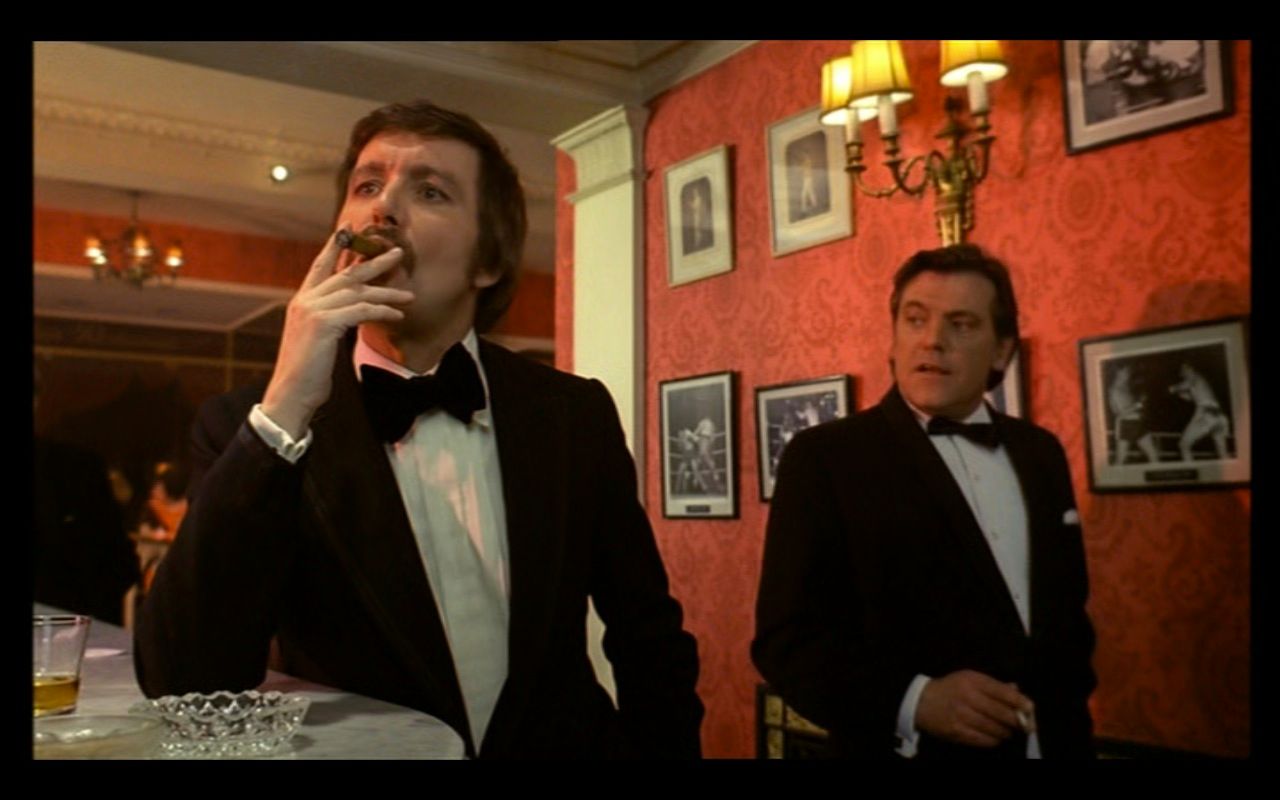 In Life at the Top, set ten years after Room at the Top, Lampton has married his sweetheart, Susan, with whom he has two children. Having established himself as a moderate success in his job, and with a good income (courtesy of Susan’s father’s company), Lampton also flirts with politics, taking on a role as a Tory councillor. The novel details Lampton’s attempts to hang on to his lifestyle, despite his tendency towards self-destruction: he has become an alcoholic, and his relationship with Susan deteriorates throughout the novel. In Life at the Top, set ten years after Room at the Top, Lampton has married his sweetheart, Susan, with whom he has two children. Having established himself as a moderate success in his job, and with a good income (courtesy of Susan’s father’s company), Lampton also flirts with politics, taking on a role as a Tory councillor. The novel details Lampton’s attempts to hang on to his lifestyle, despite his tendency towards self-destruction: he has become an alcoholic, and his relationship with Susan deteriorates throughout the novel.
Man at the Top continued Lampton’s story. Although not based on a novel by Braine, the first series featured five episodes written by Braine himself. The first series also trod some of the ground covered in Life at the Top, essentially positioning itself as a sequel to Room at the Top (and thus making Kotcheff’s 1965 adaptation of Life at the Top somewhat redundant). The series updates the concerns of Braine’s novels to the 1970s: although published in 1957, Room at the Top had been written in 1952 and was in fact set in the late-1940s. Man at the Top takes Lampton into 1970s Britain, a very different era – in which Lampton’s desire for social mobility and materialism was more commonplace, as could be seen on television in the lifestyles of Bob (Rodney Bewes) and Thelma (Brigit Forsythe) in Whatever Happened to the Likely Lads? (BBC, 1973-4). By updating Braine’s character to the 1970s, Man at the Top situates Lampton in an era in which his attitudes no longer mark him as the ‘odd one out’ but simply one of the crowd: a man born into the working class who has acquired a middle class position and seeks to surround himself with material signifiers of his status. Lampton fits neatly into this era, whilst also struggling to remain honest to his working class roots. This internal conflict within Lampton is the stuff of which so many 1970s television dramas and situation comedies were made, perhaps responding to anxieties over identity that were shared by the television viewing public, many of whom (like Bob and Thelma in the aforementioned Whatever Happened to the Likely Lads?) may have been working class men and women who had ‘done good’ for themselves and were experiencing a sense of cultural dislocation in their new middle class world of modern semi-detached housing and colour television sets. 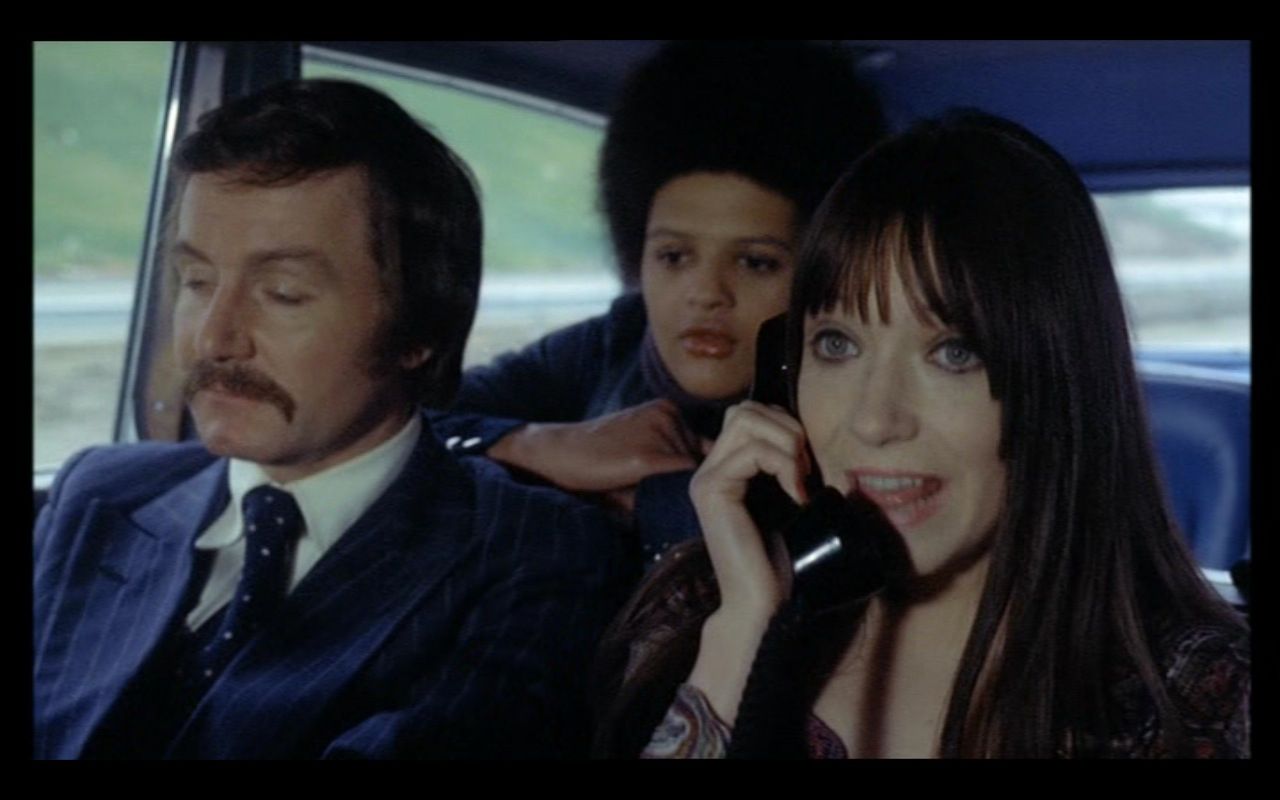 Vardy’s film Man at the Top followed Thames’ series, returning the character of Lampton to the big screen. Produced by Hammer, the film’s tagline promised that ‘Lampton’s back – on top of everything’, and the vaguely smutty connotations of this declaration are fulfilled within the film, which ups the ante in terms of sexual content: the already-chauvinistic Lampton is shown cavorting with the wife of his employer (Nanette Newman), sharing a shower and bed with two young, carefree female hitchhikers (Angela Bruce & Margaret Heald) and having a roll in the hay (or rather, the woods) with his boss’ daughter Robin (Mary Maude) during a fox hunt. Lampton’s chauvinism (at one point, he asserts that a waitress in a hotel was ‘throbbing with shop girl sexuality’) is reflected by the camera’s gaze: the filmmakers miss no opportunity to revel in a startling level of female frontal nudity. In one scene, after arriving at Ackerman’s home Lampton observes that Robin is traditionally a man’s name; shortly after, he ‘accidentally’ opens the door to Robin’s room and sees her fully naked in front of a mirror, quipping ‘So you’re not a fella, after all’. This exploitative approach to female nudity arguably jars with the material and was to some extent anachronistic even within the context of 1970s films of this genre, most likely injected into the film to mark it as different from the episodes of the television series (the BBFC gave the film the adult ‘X’ certificate). It certainly seems a step back from the second series of Man at the Top, in which in more than one episode Lampton was forced to confront and question his own chauvinistic attitudes towards women. Vardy’s film Man at the Top followed Thames’ series, returning the character of Lampton to the big screen. Produced by Hammer, the film’s tagline promised that ‘Lampton’s back – on top of everything’, and the vaguely smutty connotations of this declaration are fulfilled within the film, which ups the ante in terms of sexual content: the already-chauvinistic Lampton is shown cavorting with the wife of his employer (Nanette Newman), sharing a shower and bed with two young, carefree female hitchhikers (Angela Bruce & Margaret Heald) and having a roll in the hay (or rather, the woods) with his boss’ daughter Robin (Mary Maude) during a fox hunt. Lampton’s chauvinism (at one point, he asserts that a waitress in a hotel was ‘throbbing with shop girl sexuality’) is reflected by the camera’s gaze: the filmmakers miss no opportunity to revel in a startling level of female frontal nudity. In one scene, after arriving at Ackerman’s home Lampton observes that Robin is traditionally a man’s name; shortly after, he ‘accidentally’ opens the door to Robin’s room and sees her fully naked in front of a mirror, quipping ‘So you’re not a fella, after all’. This exploitative approach to female nudity arguably jars with the material and was to some extent anachronistic even within the context of 1970s films of this genre, most likely injected into the film to mark it as different from the episodes of the television series (the BBFC gave the film the adult ‘X’ certificate). It certainly seems a step back from the second series of Man at the Top, in which in more than one episode Lampton was forced to confront and question his own chauvinistic attitudes towards women.
When the film opens, Lampton is given the job of managing director of a pharmaceutical company by its owner, Lord Ackerman (Harry Andrews). Lampton’s immediate predecessor is shown committing suicide in the film’s opening sequence. As the film progresses, Lampton becomes aware that one of the chemicals that the company manufactures, labelled ‘D50’, was apparently responsible for rendering over a thousand women in Africa sterile during a test run. (‘A remote part of the world, where overpopulation is a problem anyway’, Ackerman says coldly.) This incident was the catalyst behind the suicide of Lampton’s predecessor. Lampton becomes involved in a battle of wits with Ackerman, which climaxes during a weekend fox hunt at Ackerman’s Yorkshire estate. The film begins with a bold sequence: Lampton’s predecessor’s suicide is shown in detail – he walks onto a bandstand in Hyde Park, removes a revolver from his briefcase and shoots himself in the head (the moment is replayed elliptically at several points throughout the film, suggesting a ‘primal scene’ that haunts the characters). The shot is immediately followed by an abrupt cut to a boxer in a ring receiving a blow to his face. A zoom in to Lampton shows him seated ringside, smoking a cigar. The film’s credits roll, with a freeze frame halting the action (the boxing match) as each new credit appears, rather like the opening credits of Peckinpah’s The Wild Bunch (1969). The boxing match ends, and Lampton talks with Lord and Lady Ackerman; however, as the sequence progresses, Vardy cuts back to the boxing match – a form of symbolic montage that underscores the fact that every conversation with Lampton is a form of verbal sparring. Some more, equally effective, non-linear editing is seen in a later sequence, which cuts between Lampton and Lady Ackerman in bed, and Lord Ackerman in the hospital as he visits a body in the morgue. 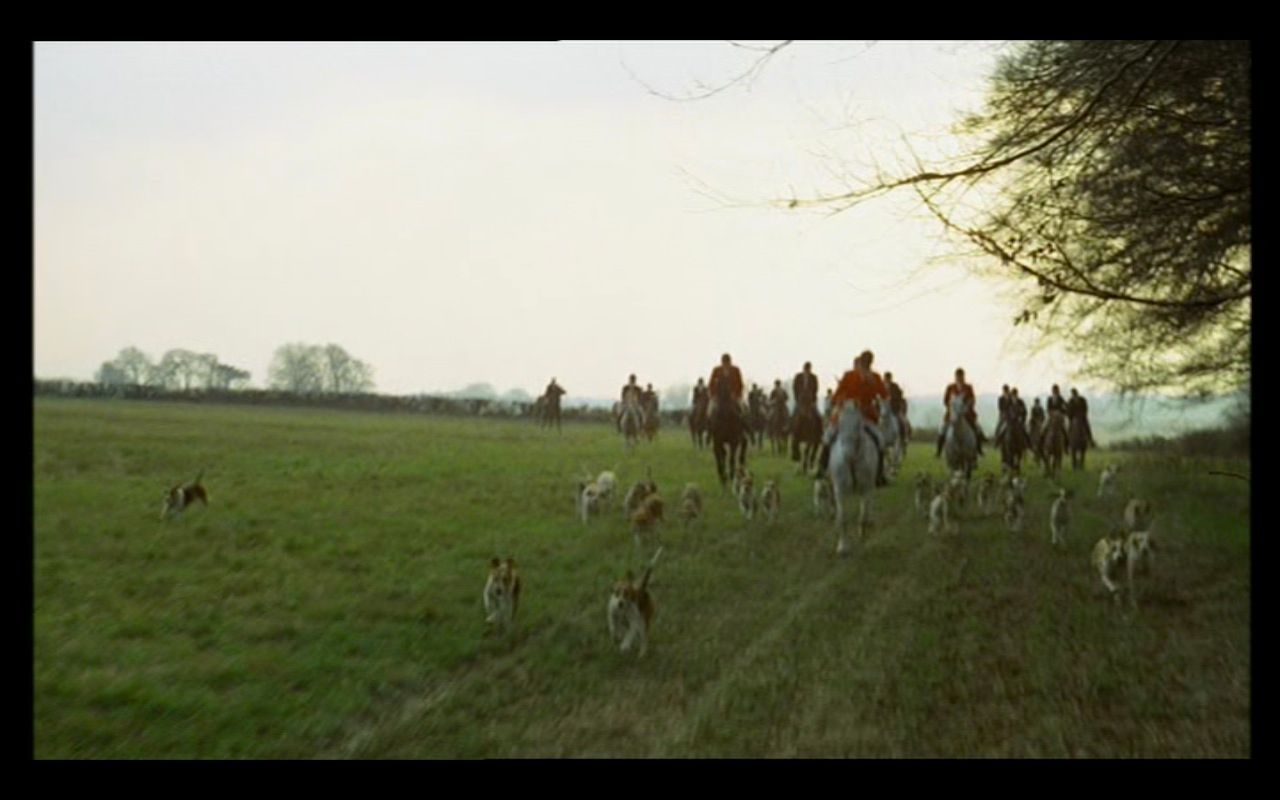 In its middle, the film diverges from its central narrative as, on his way from London to Ackerman’s estate in Yorkshire, Lampton picks up two hitchhikers, spends the night with them in a hotel, and drops them off at one of their homes. This incident allows Lampton to reflect on his life and issues of social class, first with the young women themselves and later with one of the girls’ fathers, George (Charlie Williams). Lampton engages the young women in a dialogue about money: ‘Everyone needs money’, he informs them. ‘There’s no virtue in working. There’s no virtue in making money. If you can get by without it, so much the better. That’s where your lot got it all wrong’, one of the girls notes. ‘What do you mean “my lot”?’, he asks. ‘Your generation’, she replies. ‘Look, I’ve still got one foot out the grave, you know’, he tells them. ‘People like you are no better than slaves’, the girl says, ‘always working for things you don’t want’. They tell him of a man they met in London who said that money is an ‘outmoded concept’. ‘The trouble is though, the world isn’t like that: it needs money. It needs sods like me’, Lampton declares. ‘It’s your world, Joe’, the girl retorts. ‘We’ve only got one, and as things stand at present, it’s mine’, he says. ‘Things might change’, one of the girls says. ‘Pigs might fly’, he jokes. In its middle, the film diverges from its central narrative as, on his way from London to Ackerman’s estate in Yorkshire, Lampton picks up two hitchhikers, spends the night with them in a hotel, and drops them off at one of their homes. This incident allows Lampton to reflect on his life and issues of social class, first with the young women themselves and later with one of the girls’ fathers, George (Charlie Williams). Lampton engages the young women in a dialogue about money: ‘Everyone needs money’, he informs them. ‘There’s no virtue in working. There’s no virtue in making money. If you can get by without it, so much the better. That’s where your lot got it all wrong’, one of the girls notes. ‘What do you mean “my lot”?’, he asks. ‘Your generation’, she replies. ‘Look, I’ve still got one foot out the grave, you know’, he tells them. ‘People like you are no better than slaves’, the girl says, ‘always working for things you don’t want’. They tell him of a man they met in London who said that money is an ‘outmoded concept’. ‘The trouble is though, the world isn’t like that: it needs money. It needs sods like me’, Lampton declares. ‘It’s your world, Joe’, the girl retorts. ‘We’ve only got one, and as things stand at present, it’s mine’, he says. ‘Things might change’, one of the girls says. ‘Pigs might fly’, he jokes.
When Lampton meets George, a small-time comic, he asks him, ‘Ever thought of making the big time, like on the box for instance?’ ‘What for? I make enough to live comfortable. I’ve got house, wife and her [daughter], when she bothers to drop in’, he is told in response. ‘You just told me you’re happy being a little fish in a glass bowl. Well, when I lived up here I kept banging my nose against the glass and wondering, “what the hell’s going on out there”’, Lampton says. ‘And what did you find?’ George asks. ‘I found elbow room, if you’re prepared to use your elbows, and a foothold on the ladder of success if you’re prepared to step on someone’s fingers. I seem to have two problems, George: 1) I think I’m a bastard; 2) I think I like it [….] Now, come on, George, you’ve only got two choices: get out and go for the big one, or make do for second best’, Lampton advises George. Lampton doesn’t understand that George is happy with his lot. ‘I’ve had all that, and I suppose I can do just about anything I want. I’m bloody unhappy. Still, I can buy myself a better class of misery’, Lampton asserts. ‘What have they got in London that they haven’t got in Leeds?’, George asks. ‘Nothing, but they’re prettier and more available’, Lampton tells him. 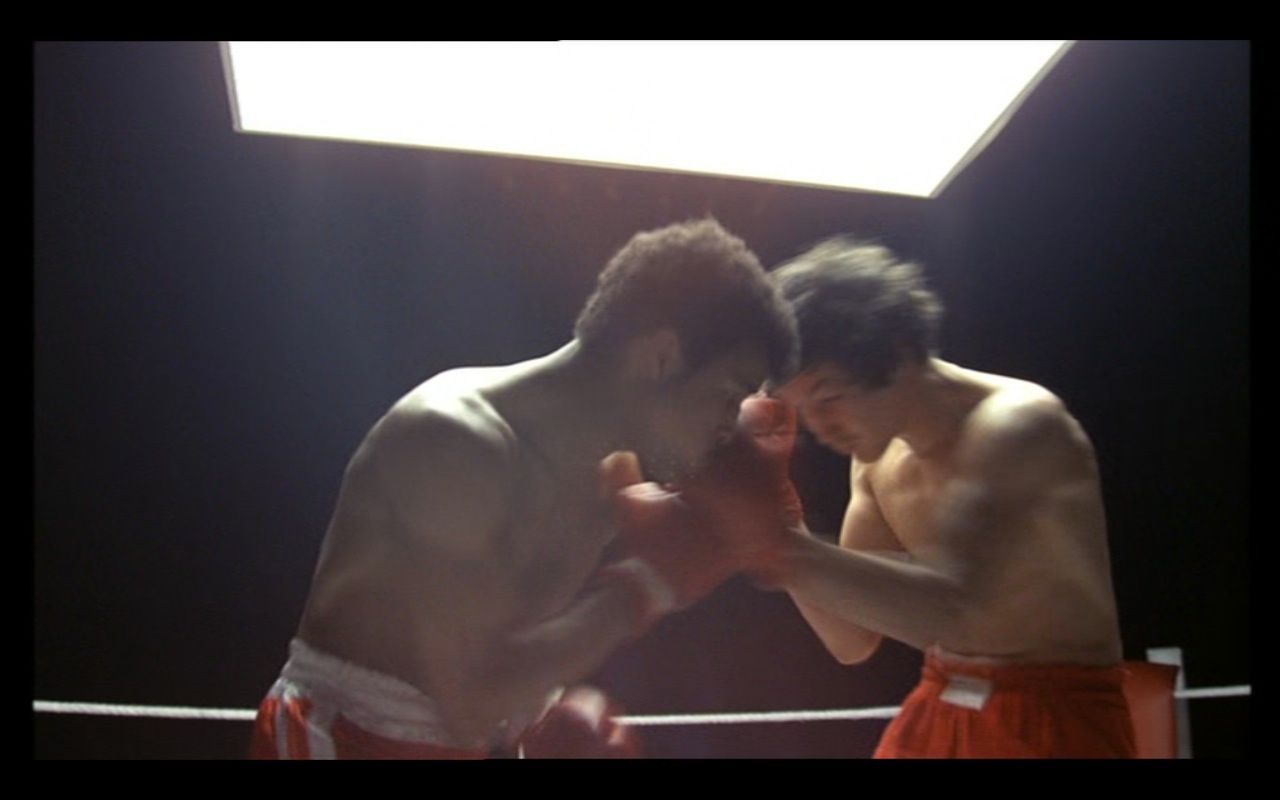 Lampton’s struggle to get to the top is facilitated by some of his more negative attributes. After the boxing match, Ackerman notes that, ‘I was asking someone about you the other day. What about Joe Lampton, I said? […] Well, I got a very emphatic reply: overbearing, treacherous, conceited, aggressive, […] a loser. Well, I’m glad to have you on my side, Joe’. Later, Ackerman discusses Lampton with his wife. ‘I can’t think why you employed him if you dislike him so much’, Lady Ackerman says. ‘Lampton? He’s an excellent salesman, first rate’, Ackerman asserts. ‘They know how to survive, the Lamptons of this world’, Ackerman informs her: ‘I despise him. I despise him for his cheap self-assurance, his filthy manners and his ridiculous vulgarity; and yet, because he’s a shrewd businessman, he’s useful to me’. Lampton’s struggle to get to the top is facilitated by some of his more negative attributes. After the boxing match, Ackerman notes that, ‘I was asking someone about you the other day. What about Joe Lampton, I said? […] Well, I got a very emphatic reply: overbearing, treacherous, conceited, aggressive, […] a loser. Well, I’m glad to have you on my side, Joe’. Later, Ackerman discusses Lampton with his wife. ‘I can’t think why you employed him if you dislike him so much’, Lady Ackerman says. ‘Lampton? He’s an excellent salesman, first rate’, Ackerman asserts. ‘They know how to survive, the Lamptons of this world’, Ackerman informs her: ‘I despise him. I despise him for his cheap self-assurance, his filthy manners and his ridiculous vulgarity; and yet, because he’s a shrewd businessman, he’s useful to me’.
The reports are being sent to Ackerman rather than Lampton, and Ackerman reminds Lampton that he was hired due to his business skills not his knowledge of chemistry. ‘The trouble is that I’ve always mistrusted people like you, and I find it difficult to change my ways’, Lampton. ‘Mutual dislike is often the best basis for a business partnership, don’t you think?’ Ackerman. On the character of Lampton, Braine once asserted that the ‘new dimension of the film [Room at the Top] was in presenting a boy from the working classes not as a downtrodden victim, but as he really was [….] [W]hat was important was that Joe was honest about the whole business of class’ (Braine, quoted in Richards, 1997: 149). However, in this film Lampton is less sympathetic than in both previous films and the series, even more ruthless in his pursuit of greed. When Lady Ackerman asks him, ‘What are you ambitious for: power, money, influence?’, Lampton responds by asserting, ‘That’ll do for a start’. Later, in bed, he reflects on his youth and notes, ‘I didn’t waste my time cultivating a rough-hewn working class charm, you now. Mine is the genuine, foul-smelling, nose-picking article [….] I was unpleasant, coarse, poor, crude and resentful. I hated the sight of the middle-class voices. I hated the sight of their neatly-pressed trousers and pressed white shirts. I wanted to piss on them all from a great height’. He’s an extremely negative character here: when Lady Ackerman tells him, ‘You can’t just go on thinking everyone’s against you’, Lampton dictates, ‘Stop thinking that, and you’re dead’. In this film, Lampton even struggles to relate to or sympathise with members of the working classes. In the hotel, he asks the maid, ‘You enjoy doing what you’re told? [….] Chasing around after people like me, bring the food, pouring the wine?’ ‘It’s a job’, she tells him. ‘Just a job? [….] Doesn’t worry you, then, serving me?’ ‘Why should it? We’re all somebody’s servant, after all; even you… sir’, she responds; her assertion underscores the gulf between what Lampton has come from and what he hopes to achieve. Later, he interrogates George about his lack of ambition, which the overly-ambitious Lampton, who doesn’t understand that George feels he has everything he could want for, sees as a passive acceptance of the role he’s been given. The film runs for 88:36 mins (PAL) and is uncut.
Video
The film is presented in an aspect ratio of 1.66:1, with anamorphic enhancement. The image is clear and film-like, with good contrast and colour. However, the encode leaves a little to be desired.
Audio
Audio is presented by a two-channel mono track (in English). No subtitles are present.
Extras
Extra features include: - a full-frame version of the film (88:36). 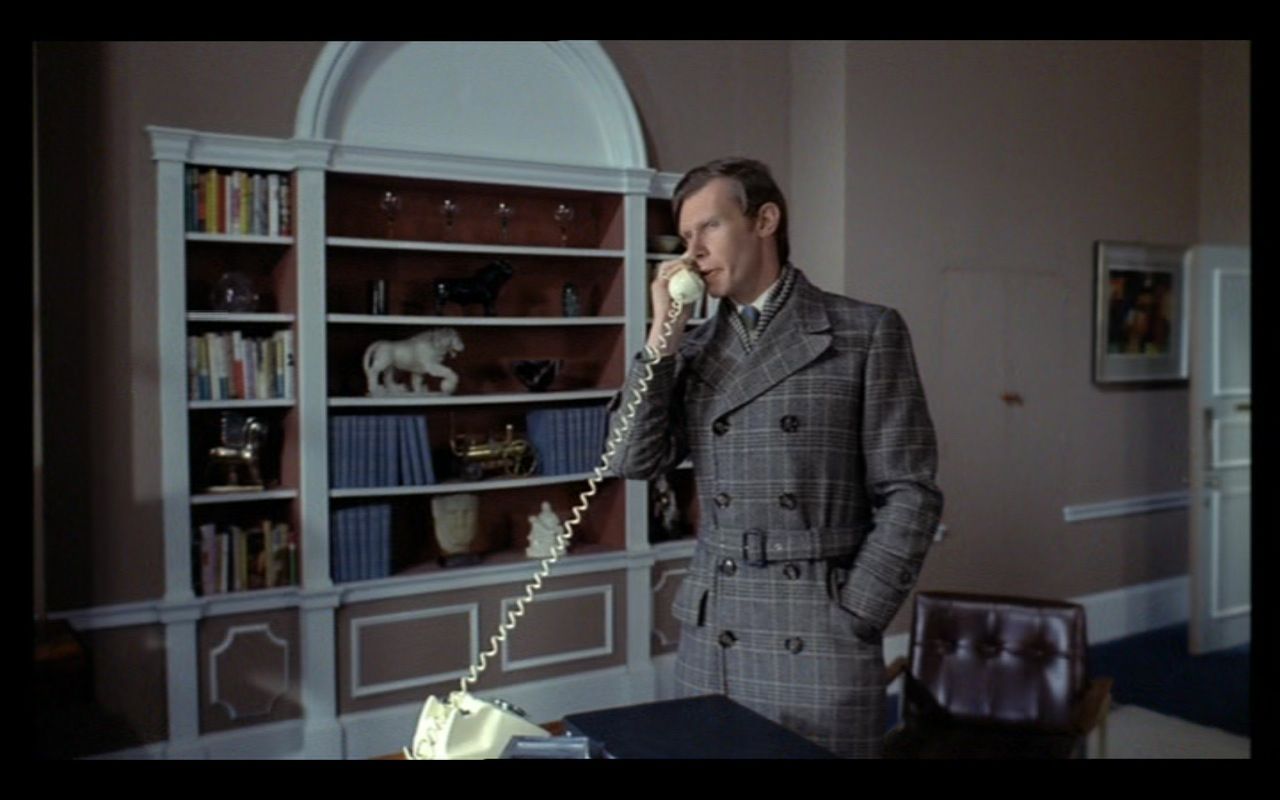 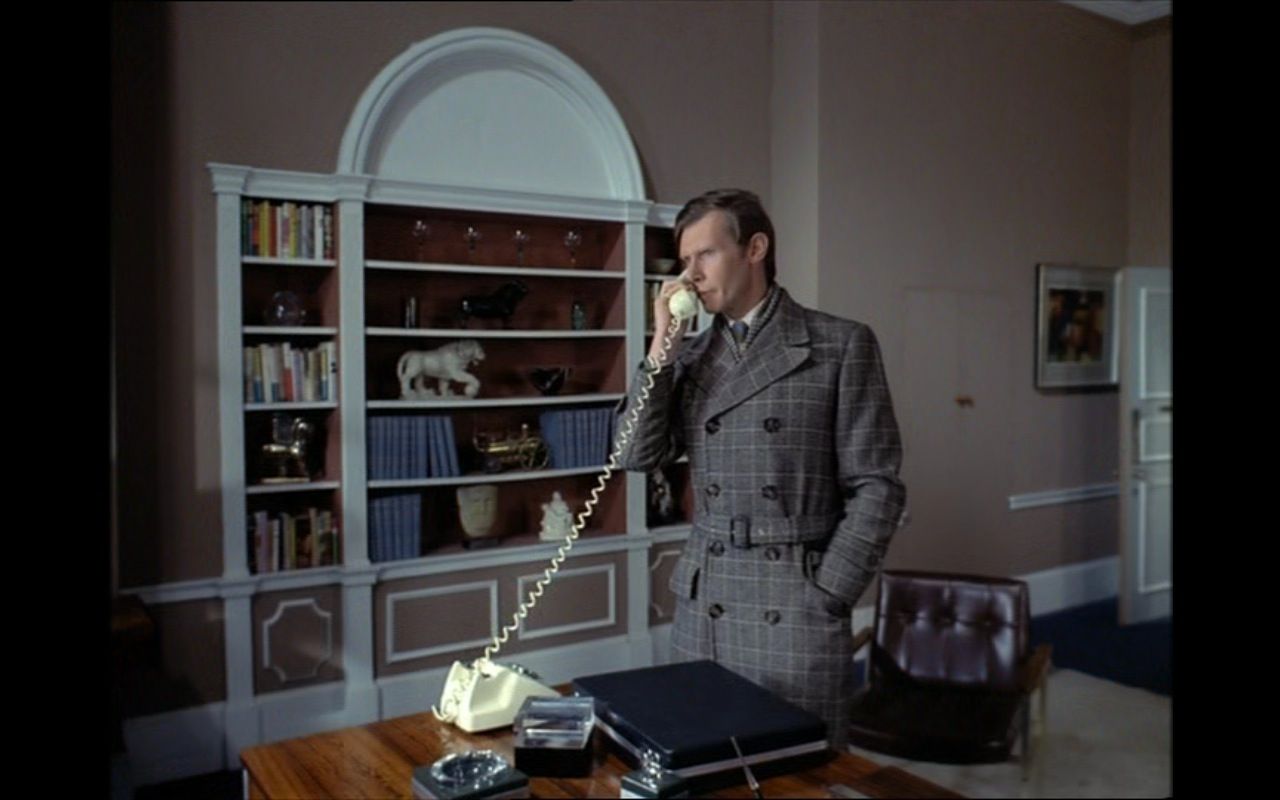
- the film’s original trailer (2:22), a punchy little trailer with a narrator who has a broad Yorkshire accent (‘Joe Lampton, with some fresh birds and some top brass opposition’). - a music suite (22:09). - a gallery (1:19) containing poster artwork and on-set stills.
Overall
Man at the Top is not entirely successful as a continuation of Braine’s now iconic character: the central narrative loses focus with the extended sequence in which Lampton offers a lift to the two female hitchhikers and spends time in one of their homes. In fact, the film seems like two television episodes (Lampton’s uncovering of Ackerman’s company’s deceit, and Lampton’s encounter with the hitchhikers) have been bolted together to make a feature-length script, and spiced up with nudity and ‘amped up’ sexual content in order to differentiate it from the Lampton stories that had been produced for television. Lampton himself seems even more bitter and cynical here, and not necessarily in a dryly-amusing way, although Haigh is given some good one-liners, referring to a lawyer as a ‘crude young fascist with a smile like a bacon slicer’ and observing that the attendees of one of Ackerman’s parties are from ‘rent-a-guest’. However, where in the series Lampton’s ambition was tempered by his relationships (for example, with his wife Susan), in the film Lampton has no such anchor, and his utter dedication to his own self-interests (moderately offset by the poor ethics of his antagonist Ackerman’s company) makes him a quite unsympathetic character here. Even for a fan of Braine’s character, Hammer’s film of Man at the Top may be quite a depressing experience. It’s not wholly unsuccessful, and it incorporates some interesting non-linear editing, but on the whole it’s not on par with the previous entries in the saga of Joe Lampton. References: Richards, Jeffrey, 1997: Films and British National Identity: From Dickens to Dad’s Army. Manchester University Press Simon, John, 1980: ‘Revived Anger, Somnolent Sex’. New York Magazine (30 June, 1980): 48-9 Sinyard, Neil, 2000: Jack Clayton. Manchester University Press Taylor, Barnaby F, 2006: The British New Wave: A Certain Tendency. Manchester University Press Walker, Alexander, 1974: Hollywood England: The British Film Industry in the Sixties. London: Orion This review has been kindly sponsored by: 
|
|||||

|